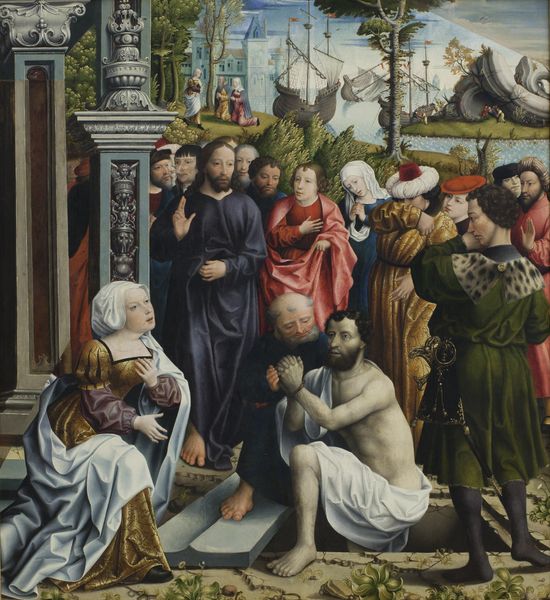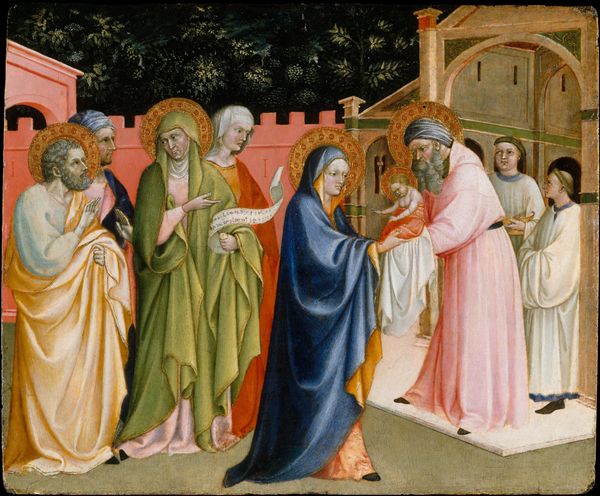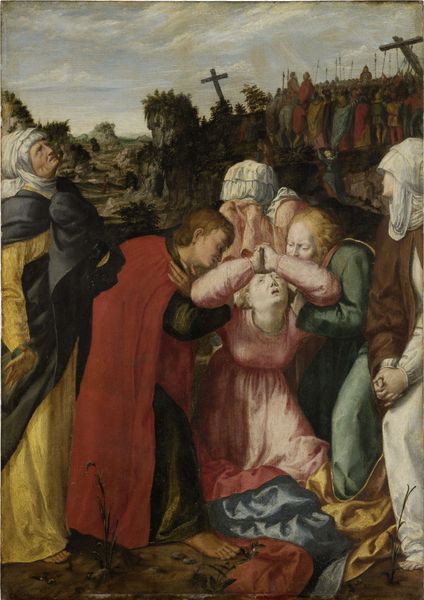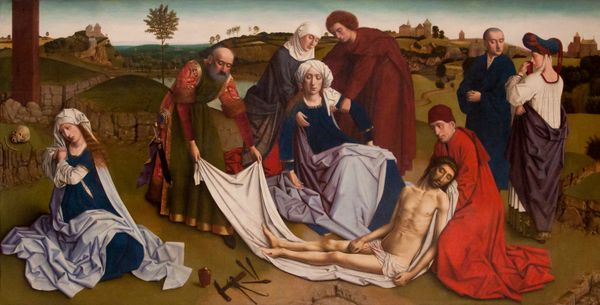
painting, oil-paint
#
narrative-art
#
painting
#
oil-paint
#
figuration
#
oil painting
#
portrait reference
#
history-painting
#
northern-renaissance
#
realism
Copyright: Public domain
Editor: Here we have "Raising of Lazarus," an oil painting by Jan Joest. The realism is striking, especially in the depiction of Lazarus. He looks incredibly frail. What do you make of this work, particularly considering its historical context? Curator: This piece is fascinating when viewed through the lens of power and marginalization. The central subject, Lazarus, pulled from the grave, can be seen as a metaphor for societal rebirth. Consider how the church, during the Northern Renaissance, wielded considerable power. How might the representation of Lazarus, seemingly helpless, comment on the relationship between the vulnerable and those in positions of authority? Editor: That's a powerful interpretation! I hadn't thought about it in terms of power dynamics. What about the setting and the diverse reactions of the figures surrounding Jesus and Lazarus? Curator: The setting provides crucial context. Note the architecture, rooted in the earthly, the temporal. The expressions range from awe to skepticism; this reflects the range of attitudes towards the Church and religious doctrine during the period. Are they questioning authority, or reaffirming faith through witnessing a spectacle? This reminds me of similar dynamics in our contemporary struggles with established systems. Does the representation here reinforce those power dynamics? Editor: It’s interesting how art from so long ago can still spark reflections on contemporary power struggles and systemic biases. I initially saw it as a simple depiction of a miracle, but there's so much more at play here. Curator: Precisely. Jan Joest has provided us with a starting point to begin a critical interrogation of societal structure! Reflecting on the narrative in relation to contemporary society offers a potent method to appreciate the work’s broader historical impact.
Comments
No comments
Be the first to comment and join the conversation on the ultimate creative platform.













